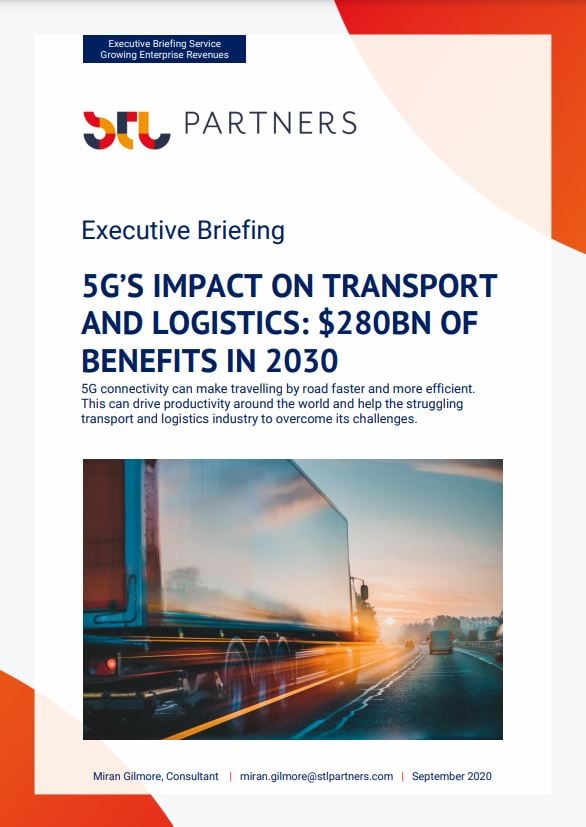Sale!
5G impact on transport and logistics: $280bn of benefits in 2030
£1,000.00 excl VAT
5G connectivity can make travelling by road faster and more efficient. This can drive productivity around the world and help the struggling transport and logistics industry to overcome its challenges.
Description
Format: PDF filePages: 45 pagesCharts: 21Author: Miran GilmorePublication Date: September 2020
Table of Contents
- Preface
- Executive Summary
- 5G can provide $280Bn of benefits to the transport and logistics industry
- 5G’s unique capabilities enable new and enhanced use cases
- However, there are challenges to adopting 5G
- Introduction: A major industry under increasing pressure
- The challenges facing the transport and logistics industry
- The role of technology in driving efficiency
- Digital transformation: Transport and logistics lags behind
- The role of 5G networks in digital transformation
- The impact of 5G on the transport and logistics industry
- What is 5G?
- 5G’s relevance in transport and logistics
- New and improved use cases and applications enabled by 5G
- Real-time routing and optimisation
- Automated last 100 yards delivery
- Connected traffic infrastructure
- 5G impact: Increased productivity to drive $280bn rise in GDP
- It’s not just about money: 5G’s socio-economic benefits
- Next steps for the T&L industry
- The role of governments
- Collaboration with the telecommunications industry
- Conclusion
Table of Figures
- Figure 1: Connected traffic infrastructure drives the $280Bn of benefits to global GDP in 2030
- Figure 2: UK top 100 hauliers reported operating margin
- Figure 3: UK logistics industry focus is cost-cutting and efficiency
- Figure 4: The four pillars of technology that will help in driving efficiency
- Figure 5: 5G’s technological capabilities and their implications for users
- Figure 6: Key benefits of 5G according to the transport and logistics industry
- Figure 7: Use cases in the transport and logistics industry enabled by 5G
- Figure 8: Real-time routing and optimisation – how it works and benefits
- Figure 9: Drones for last 100 yards delivery
- Figure 10: Connected traffic infrastructure – how it works and benefits
- Figure 11: Connected traffic infrastructure delivers the biggest GDP impact
- Figure 12: Almost 80% of the benefits of 5G within transport and logistics in 2030 are indirect benefits that will be shared across all industries from increased productivity
- Figure 13: Global GDP increase through increased productivity
- Figure 14: Estimated impact of 5G on global logistics GVA (USD billions) by use case
- Figure 15: Estimated impact of 5G on global road freight GVA by use case
- Figure 16: Decrease in fuel required (million tonnes of fuel equivalent)
- Figure 17: Decrease in road traffic accidents (accidents per year – millions)
- Figure 18: Main barriers hindering adoption of EVs and those which 5G can influence
- Figure 19: How 5G in transport and logistics benefits UN SDGs
- Figure 20: Telcos will have a role beyond connectivity
- Figure 21: Telco 5G business models
Technologies and industry terms referenced include: 5G, automated delivery vehicles, connected traffic infrastructure, digital transformation, emissions, environmental impact, freight, logistics, real-time process optimisation, real-time routing, road freight, road transport, safety, transport


